DIY Home Solutions
How To Clean Seagrass Baskets – Step by Step Guides
Seagrass baskets are a beautiful and functional addition to any home. Whether you use them for organizing laundry, storing toys, or as stylish decorative accents, these baskets made from natural fibers bring warmth and texture to your space. However, to keep them looking fresh and lasting for years, proper cleaning and care are essential. In this guide, you’ll learn how to clean seagrass baskets safely, remove stains and mold, and maintain their shape and durability over time.
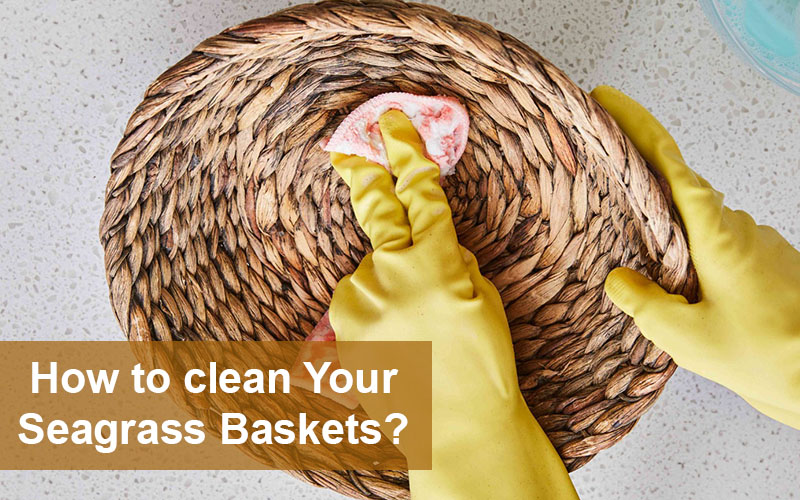
Understand about Seagrass Baskets
Seagrass baskets are beloved for their rustic charm, natural beauty, and sustainable appeal. But what exactly is seagrass, and why does it require special care when cleaning?
Seagrass is a naturally occurring aquatic plant harvested from shallow coastal waters. Once collected, the long grass-like strands are dried and woven by hand to create a sturdy, flexible material commonly used in home décor and storage solutions. Because seagrass grows quickly without the need for pesticides or fertilizers, it’s considered one of the most eco-friendly materials available for home goods. Its organic texture and neutral tones blend seamlessly into a variety of interiors – from coastal and bohemian to Scandinavian and minimalist styles.
However, seagrass is still a plant-based fiber, which means it behaves differently than synthetic materials or treated woods. It is absorbent to some degree, and prolonged exposure to moisture can weaken its structure, cause warping, or even invite mold and mildew. While seagrass is often sealed or treated during the manufacturing process, it remains semi-porous and highly sensitive to excess humidity or harsh chemicals.
Understanding the natural composition of seagrass helps homeowners take the right precautions when cleaning. You can’t just dunk a seagrass basket into a sink full of water like you might with a plastic container. Instead, it requires gentle, dry or lightly damp cleaning methods that remove dust and stains without compromising the basket’s integrity..
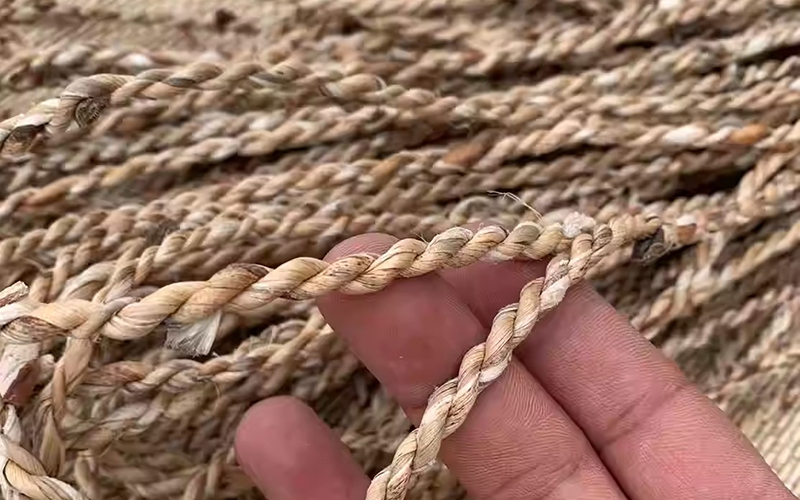
Many handmade seagrass baskets may also include a mix of other natural fibers such as water hyacinth or jute. While they share similar care requirements, it’s always wise to check if your basket includes dyed sections, leather handles, or fabric linings that may react differently during cleaning.
How Often Should You Clean Seagrass Baskets?
Like most home décor items, seagrass baskets benefit from regular light maintenance and occasional deep cleaning. The frequency depends largely on how and where the basket is used.
If you use your seagrass basket for light-duty décor purposes – such as displaying blankets in the living room or holding dried flowers – it likely only needs a quick dusting every couple of weeks. For high-traffic or utility baskets (such as those used in entryways, bathrooms, or kitchens), you should clean them more often – about once every 2 to 4 weeks, depending on exposure to dirt, moisture, or spills.
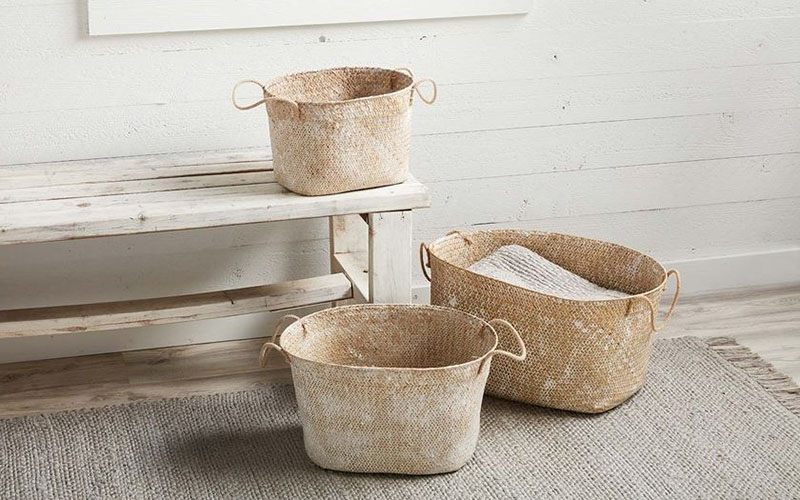
Here are a few signs that your seagrass basket needs to be cleaned:
- Visible Dust and Debris: Over time, the open weave of a seagrass basket can trap dust, pet hair, crumbs, and other small particles. If you notice buildup in the weave or at the base of the basket, it’s time for a good clean.
- Musty or Damp Odors: Because seagrass is a natural fiber, it’s vulnerable to mildew and odor buildup – especially in humid environments. A musty smell is a strong indicator that your basket needs to be cleaned and thoroughly dried.
- Stains or Spots: Accidental spills or contact with dirty items can cause discoloration. Spot cleaning should be done promptly to prevent the stain from setting in or spreading through the fibers.
- Change in Texture or Flexibility: If your basket feels softer or more pliable than usual, it might have absorbed moisture. This is a sign to dry it out immediately and clean it to prevent deterioration.
Maintaining a consistent cleaning routine not only extends the life of your seagrass basket but also keeps it looking fresh and hygienic. Just like you would dust shelves or vacuum rugs, making a habit of caring for your natural fiber baskets helps preserve their function and beauty over time.
Remember, even though seagrass baskets are tough and resilient, they are still made from living material – meaning they’ll last much longer when treated with care.
Tools You May Need when Cleaning Woven Baskets
Before starting, gather a few gentle, non-damaging tools:
- A soft-bristled brush or old toothbrush
- A dry microfiber cloth
- A small vacuum or handheld duster
- Mild soap (like castile or dish soap)
- A spray bottle with water
- White vinegar (optional, for mold)
- A fan or sunny, ventilated space for drying

How to Clean Seagrass Baskets: Step-by-Step
Dust and Debris Removal
Start with a dry clean. Use a soft-bristled brush or vacuum with a brush attachment to remove surface dust and dirt. This step is crucial before introducing any moisture.
Tip: Clean in the direction of the weave to avoid damaging the fibers.
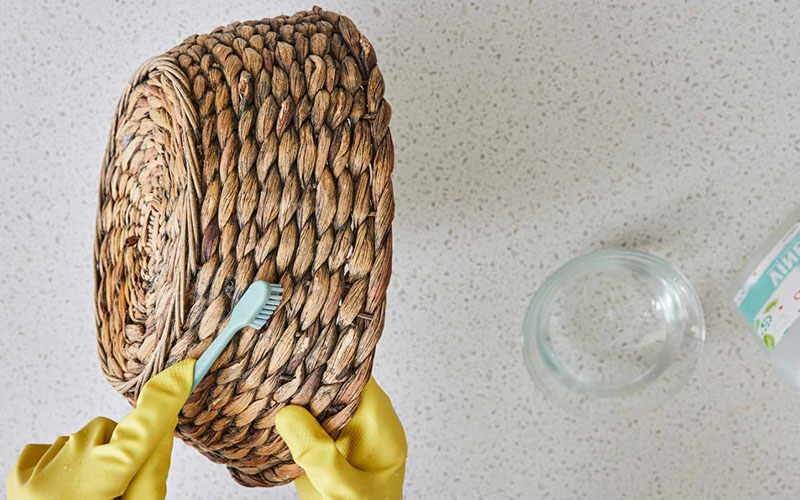
Spot Clean Stains
If your basket has visible stains or spots:
- Mix a small amount of mild soap with lukewarm water in a bowl or spray bottle.
- Lightly dip a cloth or sponge into the solution and gently dab the stained area.
- Avoid soaking the basket; use as little moisture as possible.
- Wipe with a clean, damp cloth to remove soap residue.
This method is ideal for cleaning woven baskets with light stains from spills or everyday use.
Removing Mold or Mildew from Seagrass
If your basket smells musty or shows signs of mildew:
- Mix equal parts white vinegar and water in a spray bottle.
- Lightly spray the affected areas.
- Let it sit for 10–15 minutes.
- Wipe with a damp cloth and allow the basket to dry thoroughly in a sunny or ventilated area.
Caution: Never saturate the basket. Mold thrives in moisture, so thorough drying is critical after cleaning.
This process is highly effective if you’re searching for how to remove mold from seagrass baskets safely and naturally.

Drying the Basket Properly
After any cleaning, always dry your basket completely:
- Place it in a well-ventilated space, ideally under indirect sunlight.
- Avoid using a hairdryer or heater directly on the fibers, which can cause brittleness.
- You can place the basket upside-down on a towel to ensure even drying.
Drying is the most crucial step in how to care for seagrass baskets since retained moisture can damage natural fibers over time.
What to Avoid When Cleaning Seagrass Baskets
Seagrass baskets are beautiful and functional, but they require a gentle approach when it comes to cleaning. Using the wrong methods or products can quickly damage the natural fibers, cause discoloration, or reduce the basket’s overall lifespan. Below are the key things you should avoid during the cleaning process:
1. Avoid Soaking or Submerging in Water
Seagrass is naturally absorbent. Submerging a basket in water may cause the fibers to expand, weaken, or rot over time. It can also lead to unwanted warping or mold growth, especially if the basket doesn’t dry completely and quickly.
Tip: Instead of soaking, use a lightly damp cloth for spot cleaning and always dry the basket thoroughly afterward.
2. Don’t Use Harsh Chemicals or Bleach
Cleaning agents like bleach, ammonia, or heavy-duty detergents may discolor the seagrass and break down the natural fibers. These chemicals can also leave a strong odor that is difficult to remove and potentially toxic if you’re using the basket for storage near food or textiles.
Stick to mild, natural cleaning solutions, such as diluted dish soap or white vinegar.
3. Avoid Scrubbing Too Hard
It might be tempting to scrub away a stain, but rough brushes or excessive force can unravel or fray the weave. Seagrass is durable, but aggressive cleaning will damage the structure and aesthetics.
Always blot or gently wipe instead of scrubbing.
4. Don’t Dry in Direct Sunlight or Near Heat Sources
Seagrass fibers can become brittle when exposed to direct sunlight or placed near heaters. Prolonged heat may cause the color to fade and the basket to crack or lose its shape.
Allow the basket to air dry in a well-ventilated, shaded area instead.

5. Don’t Store in Damp or Closed Spaces
Even a clean basket can develop mold or odors if stored in a humid area without ventilation. Closets, basements, or bathrooms with poor airflow are risky environments unless extra care is taken.
If storing long-term, keep the basket in a breathable fabric bag or airy space with moisture absorbers.
Avoiding these common mistakes will help your seagrass baskets maintain their natural beauty and strength for years.
How to Deodorize Seagrass Baskets
Even with regular cleaning, seagrass baskets can sometimes develop a musty or earthy smell – especially in humid climates or after long-term use. Fortunately, there are several natural, safe ways to deodorize your baskets without damaging the material.
1. Use Baking Soda
Baking soda is a powerful and natural deodorizer. Simply sprinkle a thin layer of baking soda inside the basket, especially if it’s used for storage. Let it sit for 12–24 hours, then shake or vacuum out the powder.
This method absorbs odors without introducing moisture or chemicals.
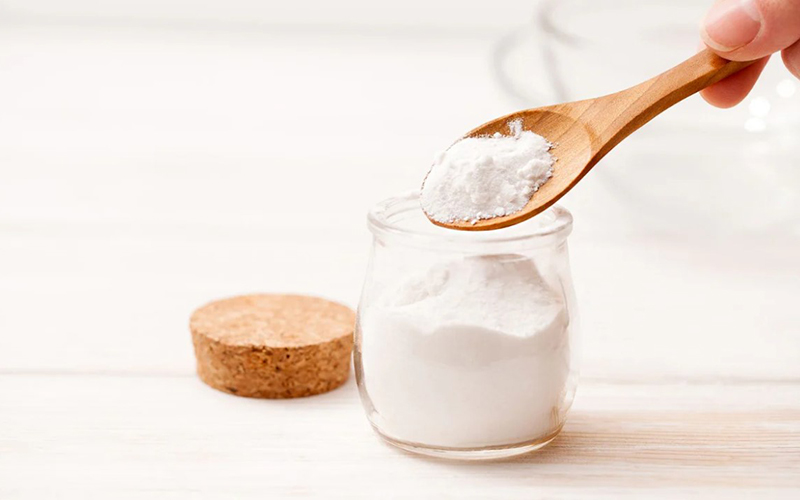
2. Activated Charcoal or Charcoal Bags
Place a small pouch of activated charcoal (or a charcoal odor absorber) inside the basket and leave it for a few days. These are especially helpful in areas with high humidity and work continuously to neutralize smells.
Choose unscented charcoal to avoid chemical perfumes.
3. Sun and Fresh Air (But Indirect!)
One of the simplest ways to deodorize your basket is to place it outdoors in a shaded, breezy spot for a few hours. This allows air circulation to naturally remove moisture and odors.
Avoid direct sunlight to protect the color and texture.
4. Essential Oil Cotton Balls (Optional)
If you’d like a light, fresh scent, you can tuck a few cotton balls with a drop of essential oil (like lavender or lemon) inside a small fabric pouch, then place it inside the basket. Don’t apply oils directly to the seagrass.
Use sparingly – some oils may stain or react with natural fibers over time.
5. Vinegar Spray (Mild Solution)
A very diluted vinegar-water spray (1 part white vinegar to 4 parts water) can be misted gently into the air around the basket – never directly on it. The vinegar smell will fade, and it helps neutralize lingering odors.
By following these gentle deodorizing methods, your seagrass baskets will stay fresh, clean, and ready to use without risk of damage or unpleasant chemical residues.
Tips for Maintaining Natural Fiber Baskets
Keeping your seagrass baskets looking their best isn’t just about cleaning. Here are some extra tips for long-term care:
- Keep Baskets Dry: Avoid placing them in damp environments like wet bathrooms or basements. Use liners inside baskets if storing liquids or damp items.
- Avoid Direct Sunlight: Prolonged exposure to sunlight can bleach or weaken the seagrass. Place baskets in shaded or indirect light areas.
- Use Liners or Inserts: If using your baskets for laundry or food, adding a cotton liner will protect the seagrass and make cleaning easier.
- Rotate Baskets: If used for decoration, rotate your baskets occasionally to ensure even exposure to light and air, reducing wear in one area.
Storage Tips for Seagrass Baskets
If you’re not using your baskets for a season, follow these storage tips:
- Clean and dry them completely first.
- Store in a dry, cool place away from humidity.
- Use breathable covers like cotton bags or pillowcases instead of plastic.
- Avoid stacking heavy items on top to prevent crushing.
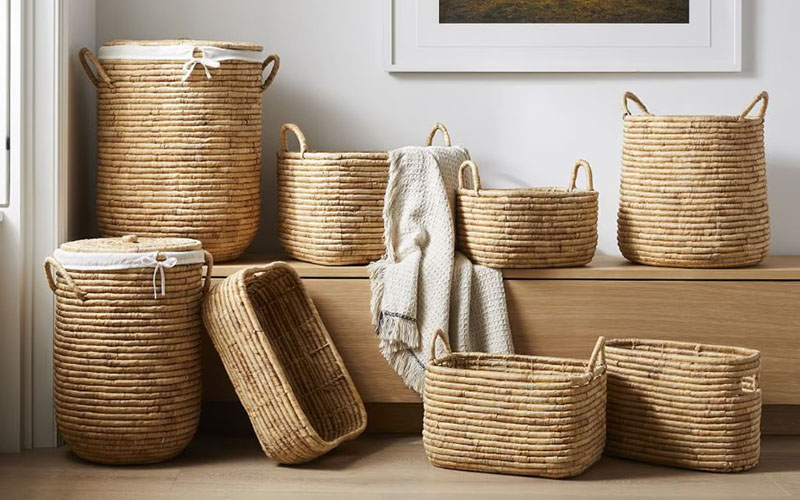
When to Replace a Seagrass Basket
Seagrass baskets are known for their durability, natural beauty, and eco-friendly appeal. With the right care, they can last for many years and continue to add warmth and texture to your home. However, like any natural product, there comes a point when it may be time to let go and replace your basket. Knowing when to make that decision is key to maintaining both the functionality and aesthetic of your space.
Here are the most common signs it’s time to replace your seagrass basket:
1. Persistent Odors That Won’t Go Away
Even after deodorizing with baking soda, charcoal, or fresh air, some baskets retain a musty, moldy smell. This often happens when the basket has absorbed moisture over time and developed internal mildew. If the odor lingers no matter what you do, the damage may be too deep within the fibers to fix.
Tip: If you use your basket to store items like towels, linens, or children’s toys, lingering smells could transfer to the contents – so replacement is the safest choice.
2. Mold or Mildew Growth
If you notice visible black or white mold patches that reappear even after cleaning, it’s a strong indication that the basket is compromised. Mold not only affects the appearance and smell of the basket, but it can also be a health concern – especially for allergy-sensitive individuals.
Mold damage in natural fibers like seagrass is often irreversible.

3. Structural Weakness
Over time, the weaving in a seagrass basket can loosen, break, or unravel. If the basket no longer holds its shape, collapses under weight, or has sharp broken edges, it’s no longer functional or safe to use – especially for carrying items or storing fragile goods.
Minor fraying can sometimes be repaired, but significant structural breakdown is a sign to replace it.
4. Discoloration and Fading
Some fading is natural, especially if the basket is exposed to sunlight. However, if your basket has uneven, patchy discoloration or stains that won’t lift with gentle cleaning, it can start to look worn and tired. In decorative settings, this may diminish the overall aesthetic of your room.
If the basket has sentimental or design value, consider repurposing it instead (e.g., as a plant pot cover or rustic wall decor).
5. Outgrowing Its Purpose
Sometimes, a basket is still in good condition but no longer meets your storage or style needs. Perhaps you need a larger size, a different shape, or a basket with handles for easier mobility. In such cases, replacing the basket with a more suitable option improves both organization and convenience.
Replacing a seagrass basket doesn’t mean you’ve wasted it – it simply means it has served its purpose. Many customers choose to replace old baskets with handcrafted, ethically made alternatives that continue to support sustainable living and artisan craftsmanship.
Whether you’re upgrading for style, function, or hygiene, it’s always worth choosing a new basket that fits both your space and values.
Common Questions About Seagrass Basket Care
1. Can you wash a seagrass basket with water?
You should avoid soaking or submerging seagrass baskets in water. A light damp cloth can be used for spot cleaning, but too much moisture may cause the fibers to warp, weaken, or develop mold.
2. How do I remove stains from a seagrass basket?
Mix a small amount of mild dish soap with water and gently dab the stained area using a soft cloth. Wipe again with a clean damp cloth and let the basket air dry completely in a shaded, ventilated area.
3. Can I use vinegar or baking soda to clean my seagrass basket?
Yes. A diluted white vinegar solution can help remove odors and mild stains. Baking soda works well as a natural deodorizer – just sprinkle some inside the basket, let it sit overnight, and shake it out the next day.
4. How do I prevent my seagrass basket from getting moldy?
Keep your basket in a dry, well-ventilated area. Avoid placing it on damp floors or storing it in enclosed, humid spaces like bathrooms or basements. Regularly air it out and ensure it’s completely dry after cleaning.
5. Can I use a seagrass basket in the bathroom or laundry room?
You can, but be cautious. Humid environments increase the risk of mold. If you use seagrass baskets in moisture-prone areas, consider placing moisture absorbers nearby and clean them more frequently.
6. Is it okay to leave my seagrass basket in direct sunlight to dry?
It’s best to avoid direct sunlight. Although it may speed up drying, prolonged UV exposure can cause the fibers to fade and become brittle over time. Opt for a shaded area with good airflow instead.
7. How long do seagrass baskets typically last?
With proper care, a high-quality seagrass basket can last for several years. Regular dusting, occasional spot cleaning, and avoiding excess moisture will help maintain its condition and longevity.
8. What should I do if my basket starts to smell musty?
Try deodorizing with baking soda or placing a small pouch of activated charcoal inside the basket. Letting the basket air out in a shaded outdoor area can also help eliminate odors.
9. Can I repair a fraying or broken seagrass basket?
Minor fraying at the edges can sometimes be trimmed or reinforced with natural twine. However, if the structural weave is damaged or the basket loses shape, it’s usually best to replace it.
Final Thoughts
Learning how to clean seagrass baskets properly ensures that you can enjoy their beauty and function for years. These handmade, eco-friendly pieces deserve gentle care – and with just a little effort, you can keep them fresh, clean, and mold-free.
Whether you’re cleaning seagrass storage bins, decorative baskets, or laundry hampers, following these simple techniques will help you maintain their natural charm and extend their lifespan.
At VietShopDesign, we’re passionate about bringing the warmth of handcrafted lighting into every home. From seagrass baskets to natural woven pendant lights, our collection celebrates traditional craftsmanship and sustainable materials. Looking for unique lighting ideas to brighten your space with character and charm?
Visit our store today and discover timeless designs that make a lasting impression.
Keywords used naturally in the article: how to clean seagrass baskets, remove mold from seagrass basket, cleaning woven baskets




















Id like to thank you for the efforts you have put in penning this site. Im hoping to see the same high-grade blog posts by you in the future as well. In fact, your creative writing abilities has inspired me to get my own site now 😉
Good post. I learn something new and challenging on blogs I stumbleupon on a daily basis. Its always exciting to read content from other authors and use a little something from other web sites.
Thank you for the tips!